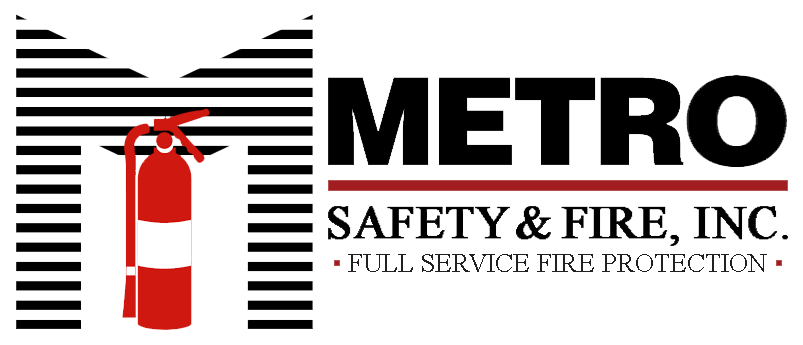
- Home
- Cartridge Operated Fire Extinguishers
Cartridge Operated Fire Extinguishers
Cartridge Operated Fire Extinguishers
SERVING PORTLAND OR | BEAVERTON OR | VANCOUVER WA | LONGVIEW WA

Cartridge operated fire extinguishers are essential tools in industries facing significant fire hazards such as chemical, petrochemical, oil and gas, aviation, power, and mining sectors. These extinguisher cartridges are known for their rugged construction, ease of recharge, and ability to release a substantial amount of suppression agent in a short time span (ie: 14 seconds discharge time for a 10 lb. cylinder).
Furthermore, the cartridge operated fire extinguisher is user-friendly, providing clear instructions on its operation and effective discharge of the agent, which can be mastered with minimal practice.
Cartridge Operated Fire Extinguisher Maintenance Requirements
A cartridge operated fire extinguisher requires a more extensive inspection process, involving approximately 43 steps, varying slightly depending on the manufacturer. This detailed procedure is outlined in the NFPA 10 Standard for Portable Fire Extinguishers, as well as in the manufacturer’s maintenance and recharge manual.

The Cartridge Operated Fire Extinguisher requires a 12-year hydrostatic test but does not need the 6-year internal maintenance, as it undergoes an internal inspection annually during the routine maintenance procedures.
Corrosion Can Be an Issue With Cartridge Operated Extinguishers
Corrosion can be a concern for Cartridge Operated Fire Extinguishers if they are situated in environments exposed to weather or corrosive atmospheric conditions. These devices are designed as pressure vessels that typically maintain no internal pressure. However, when the puncture lever is activated, they instantly pressurize from "zero" to +250 psi. This sudden change can lead to catastrophic shell failure, potentially resulting in serious injuries.
NFPA 10 clearly outlines the conditions under which a fire extinguisher should be failed or condemned. These include situations where corrosion has led to pitting, including pitting that occurs beneath the removable nameplate or name band assembly. Additionally, it specifies that a fire extinguisher must be condemned if any local or general corrosion, cuts, gouges, or dings have removed more than 10 percent of the minimum cylinder wall thickness.
Most manufacturers assert that a shell should be condemned if metal is removed due to corrosion; this refers to anything beyond mere surface rust or flash corrosion. Flash corrosion is the rapid and widespread deterioration that occurs when metals are exposed to corrosive environments. (Source: Corrosionpedia)
Proper maintenance procedures, carried out by trained personnel, are a crucial component of an owner’s fire extinguisher cartridge maintenance plan.
Industrial Dry Chemical Cartridge Operated Fire Extinguishers
The Cartridge Operated Fire Extinguishers are designed specifically for industrial settings, especially in environments where frequent fire suppression is necessary. These extinguishers use specialized fire suppression chemicals and powders tailored for various fire risks:
- ABC dry chemical is a versatile agent suitable for ordinary combustibles, flammable liquids, and electrical fire hazards.
- Purple K dry chemical, composed of potassium bicarbonate, is highly effective against flammable liquids and is electrically non-conductive.
- Regular BC dry chemical, made from sodium bicarbonate, is ideal for flammable liquid and electrical hazards.
- Class D Flammable Metals represent a unique hazard. Ansul manufactures Cartridge Operated Fire Extinguishers containing special blends designed to suppress specific metals and alloys.
- Ansul Class D Metal-X is a sodium-chloride based dry powder developed to extinguish fires involving magnesium, sodium, potassium, or sodium-potassium alloys.
- Ansul Class D Met-L-Kyl features a sodium-bicarbonate based dry chemical, specially formulated to extinguish metal alkyls—pyrophoric liquids that ignite upon exposure to air, such as triethylaluminum.
- Ansul Class D Lith-X is a graphite-based dry powder intended for lithium fires and is also effective on metal fires with high melting points like zirconium, titanium, and sodium-potassium alloys.
How Do you Pressurize a Cartridge Type Extinguisher?
A Cartridge Operated Fire Extinguisher remains unpressurized until the user activates it by puncturing the separate propellant cartridge mounted externally on the shell. This is achieved by depressing the Puncture Lever
To ensure the extinguisher is ready for use, it is crucial to regularly check that the propellant cartridge is intact and correctly attached. This proactive maintenance ensures that when the need arises, the extinguisher can be activated quickly and effectively, providing reliable fire suppression in critical moments. Always follow the manufacturer's guidelines for testing and maintenance to ensure optimal performance of your Expellant Gas Cartridge.
Maintaining Your Cartridge Operated Fire Extinguisher
During the annual maintenance the Cartridge Operated Fire Extinguisher undergoes a complete teardown, inspection of all parts and reassembly to ensure that it remains in optimal working condition. The manufacturer’s maintenance manual has the step by step instructions for its model. The twelve year hydrostatic test must be performed by a registered testing company - most often a fire extinguisher service company with a fully equipped test shop.
Documentation of all maintenance activities provides a clear history of the extinguisher’s condition and any repairs, tests or recharges that have occurred. This documentation is essential not only for safety audits but also for compliance with local fire code and workplace safety regulations.
Metro Cartridge Operated Fire Services
Need assistance with cartridge operated fire services for your business? Our fire equipment maintenance services are competitively priced, and our fire extinguisher technicians are all ICC certified, with comprehensive training in both NFPA standards and the manufacturer’s maintenance protocols.
At Metro Safety & Fire, Inc., customer service and safety are top priorities. Contact us today to schedule your Cartridge Operated Fire Extinguisher services or to receive a Free Estimate.

